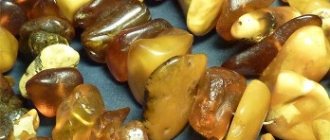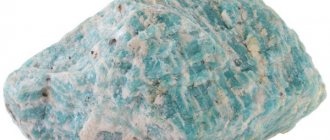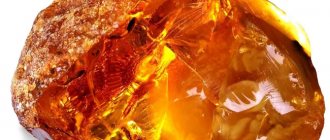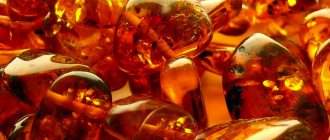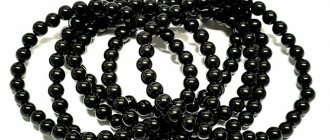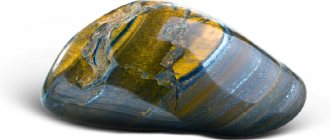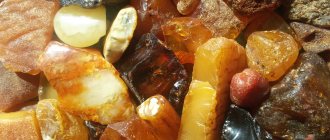The color palette and types of amber amaze even the most sophisticated jewelry lovers. The number of shades has reached 350. At the same time, plants, insects and even small amphibians fall into the embrace of the sun stone. Such inclusions, frozen in ancient resin, represent truly unique creations of nature. Each variety deserves a separate description. In this article we will analyze the most popular forms of amber.
Origin is unique
The birth of amber is unusual. This is the resin of coniferous trees that disappeared from the Earth millions of years ago. Global warming caused plants to “cry”, and over time these tears turned into stone.
At the end of the 20th century, after conducting new research, scientists abandoned the version of the origin of amber from a single species of extinct prehistoric pine. It has been proven that the source for the formation of stone is the fossil resin of several plant species. These are conifers from the Sciadopitis family.
Nowadays, the only species left of this flora is the whorled one. The tree has unique needles. It grows only in Japan as an ornamental plant. And once upon a time, representatives of the family were found all over the planet. The time period of existence of conifers in nature is even difficult to imagine - from 22 to 115 million years ago.
This is exactly the age of amber that is found today on the shores of the Baltic Sea, in Lebanon, Canada, France, England, Russia, the USA, and Ukraine. The youngest is considered to be the Mexican sunstone (22 million years old), and the oldest are Spanish varieties from the province of Alava (115 million years old).
Centenarians
The most venerable nugget from the USA, Illinois, the age of the find is 320 million years. Scientists say the stone will help understand the development of life on earth and even cast doubt on Darwin’s theory of evolution.
Silver is occupied by a 100-million-year-old representative found in Myanmar. Golden honey birmite is recognized as an interesting find for geneticists. Flowers and a box with formed seeds were preserved inside the stone.
Scientists admit that the plants have been preserved in their original form, and this will help obtain their genetic code.
In addition to color, transparency, purity, the price of amber is influenced by inclusions: a lizard encased in resin, a frog, insects, plants.
Colors and physical properties
Amber colors range from almost completely transparent white to dark brown. The shades are numerous:
- milky white;
- Ivory;
- yellow (from light to rich dark);
- golden;
- orange;
- red;
- greenish;
- black.
Between the listed colors in the spectrum there are more than 300 intermediate shades. The reason for this abundance is the presence of foreign substances that entered the body of amber during the hardening of the fossil resin. For example, particles of sulfur pyrites or algae trapped inside give a green tone.
The transparency of sunstone is also not always the same. There are completely translucent ambers. At the same time, there are also specimens that do not transmit light at all. Fossil resin is not particularly hard. An indicator of 2.5 units is a level below average on a ten-point Mohs scale.

